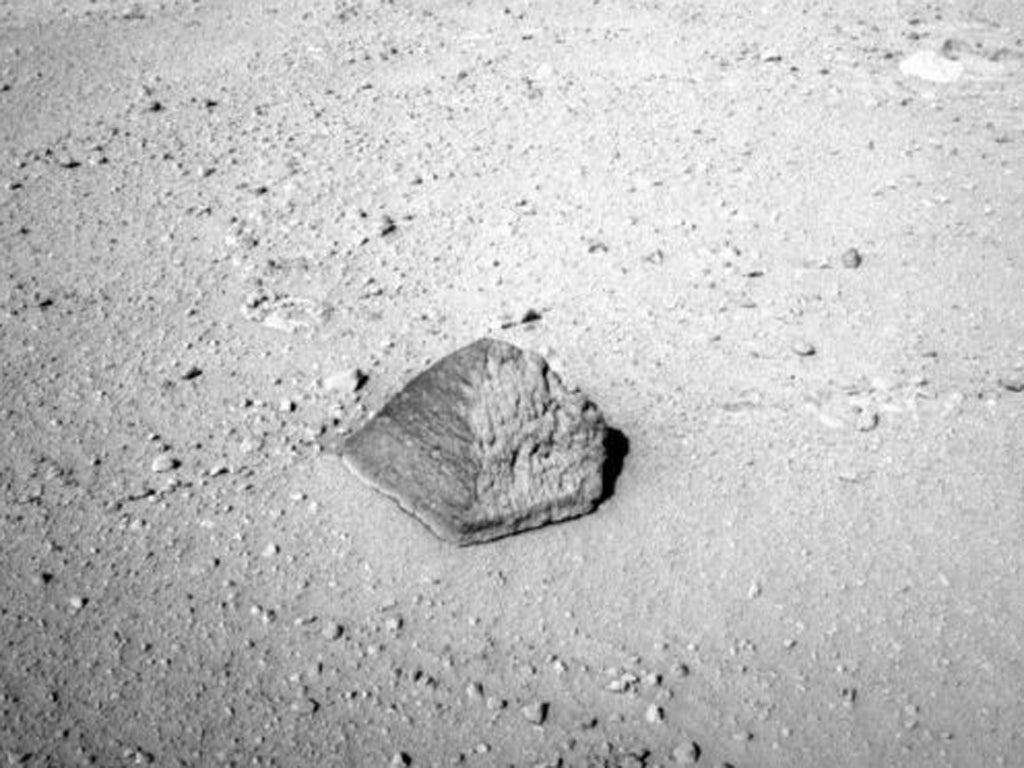Nasa's Mars rover Curiosity makes progress as it targets pyramid-shaped rock named after late engineer Jake Matijevic

Your support helps us to tell the story
From reproductive rights to climate change to Big Tech, The Independent is on the ground when the story is developing. Whether it's investigating the financials of Elon Musk's pro-Trump PAC or producing our latest documentary, 'The A Word', which shines a light on the American women fighting for reproductive rights, we know how important it is to parse out the facts from the messaging.
At such a critical moment in US history, we need reporters on the ground. Your donation allows us to keep sending journalists to speak to both sides of the story.
The Independent is trusted by Americans across the entire political spectrum. And unlike many other quality news outlets, we choose not to lock Americans out of our reporting and analysis with paywalls. We believe quality journalism should be available to everyone, paid for by those who can afford it.
Your support makes all the difference.Nasa's Mars rover Curiosity has stopped en-route to its first official destination to examine an unusual pyramid-shaped rock.
The rover is around half way on its journey to an area known as Glenelg, where researchers expect to find a combination of three different types of geological terrain. Mars science Laboratory project scientist John Grotzinger said it has covered a total distance of 950 feet since landing on the red planet six weeks ago, and 100 ft of this distance was covered just last night.
Although the latest discovery of the rock, which measures around 25cm in height and 40cm at the base, is not expected to provide any significant scientific value, it will give the robot an opportunity to test three of its instruments simultaneously for the first time.
Tomorrow the rover will begin its research on the rock, using its ChemCham laser to shoot it, before examining closely with its Mahli hand lens and X-ray spectrometer, giving it a good idea of the atoms present inside.
Fully expected to be a lump of Martian basalt - a type of volcanic rock - the latest discovery has been named 'Jake Matijevic' after a Curiosity engineer who tragically died just after the vehicle touched down on 6 August.
Although the Matijevic rock's surprisingly regular pyramidal shape will no doubt fire the imaginations of conspiracy theorists back here on Earth, Professor Grotzinger said that such geometry is not uncommon and is probably a product of wind erosion.
"Our general consensus view is that these are pieces of impact ejecta from an impact somewhere else, maybe outside of Gale Crater [where the rover landed], that throws a rock on to the plains, and it just goes on to sit here for a long period of time," he said. "It weathers more slowly than the stuff that's around it. So, that means it's probably a harder rock."
The exercise on this rock will be a run-through in order to outline a procedure to be used on future targets that may present themselves as of far more scientific relevance, and which can then be drilled and taken up into the sophisticated analysis labs inside the rover's body.
Such experiments will be key to Curiosity's mission, which aims to understand whether the planet could ever have supported microbial life. The team hope to address the question more fully when the rover reaches the base of Mount Sharp, a big mountain that dominates the centre of Gale Crater, although this is not expected to be for many months.
Yesterday, the rover also managed to send back pictures of a rare occurrence for Earthlings, as Mars' two moons caused a partial eclipse of the sun.
Although not particularly rare on Mars, the transit of Phobos and Deimos does assist scientists trying to understand the planet's internal make-up.
Out of this world: Astronomy Photographer of the Year pictures
Join our commenting forum
Join thought-provoking conversations, follow other Independent readers and see their replies
Comments